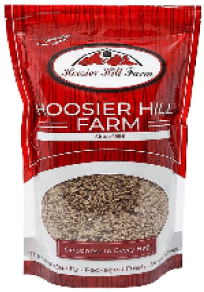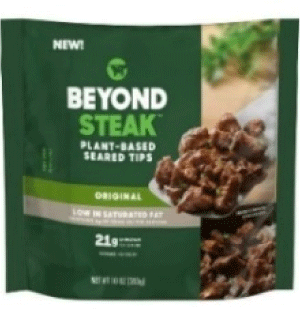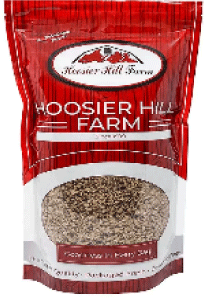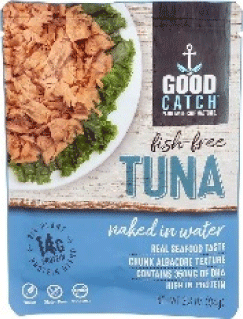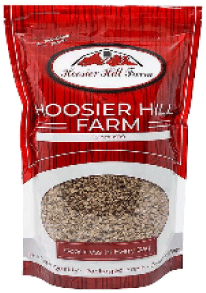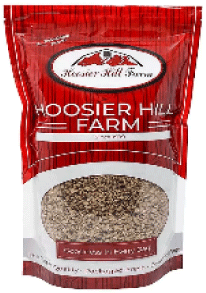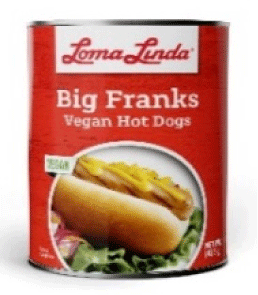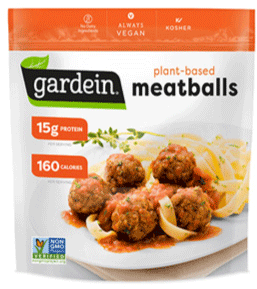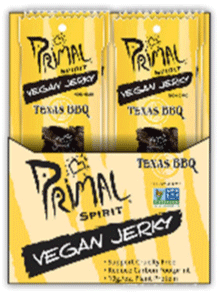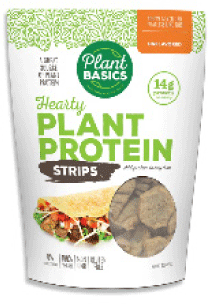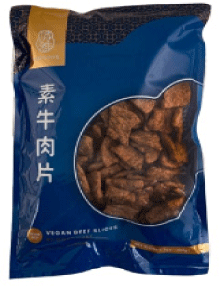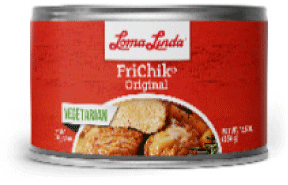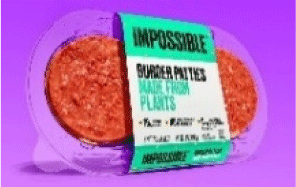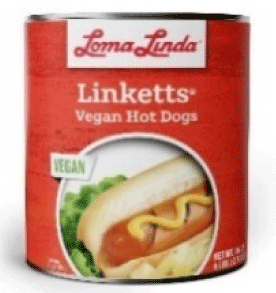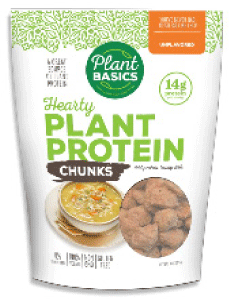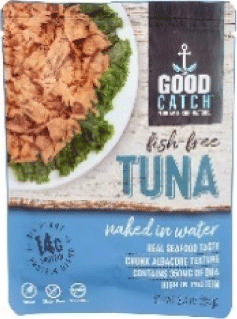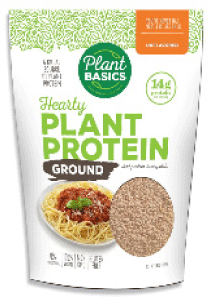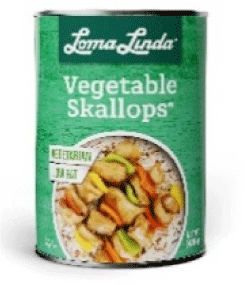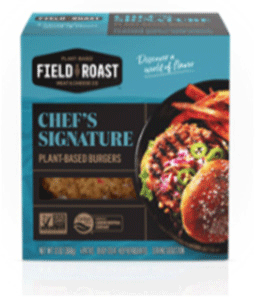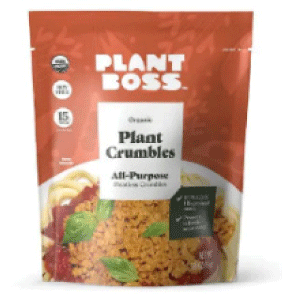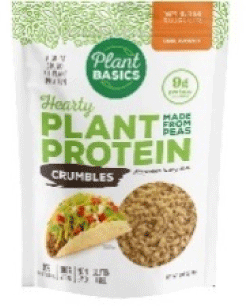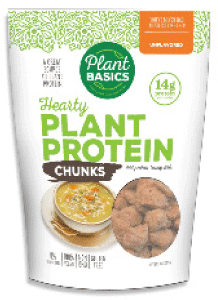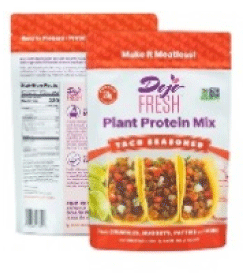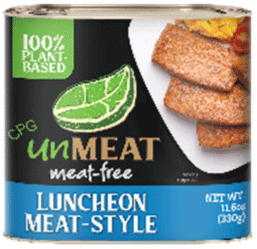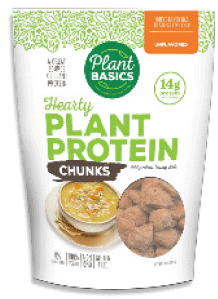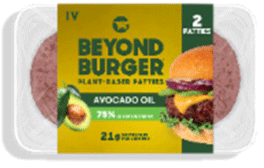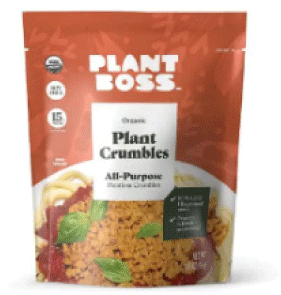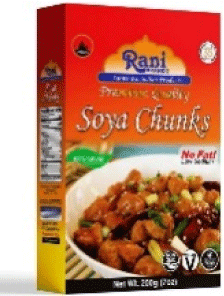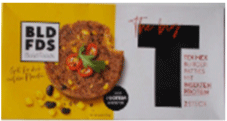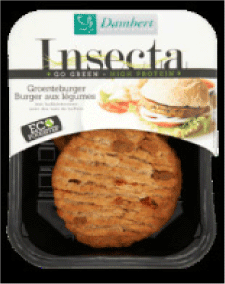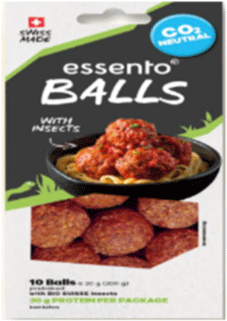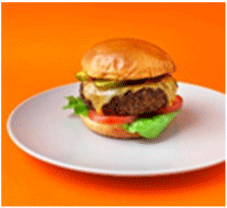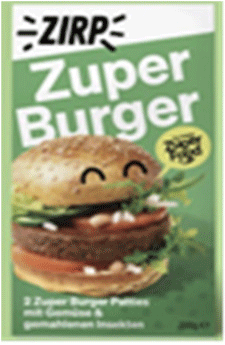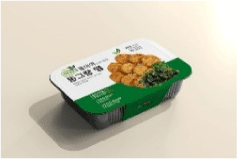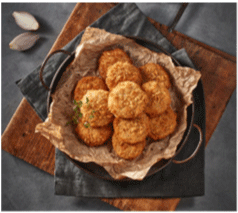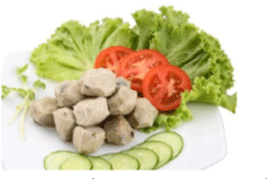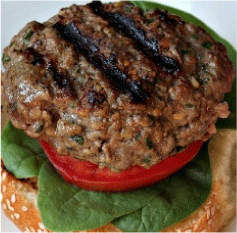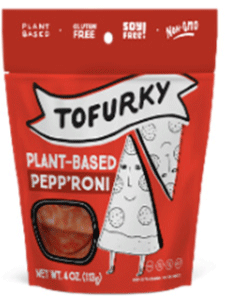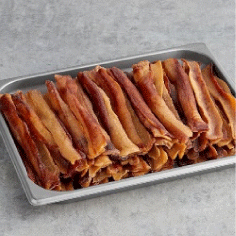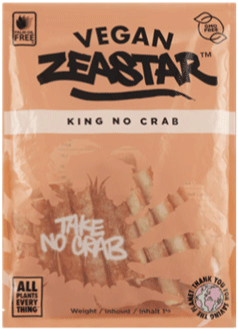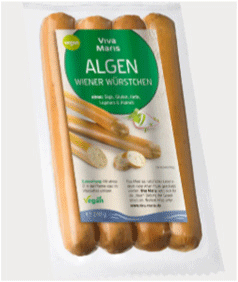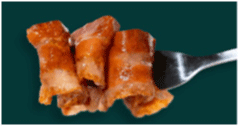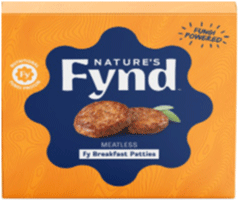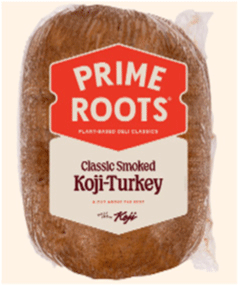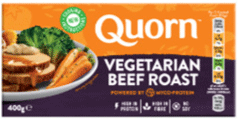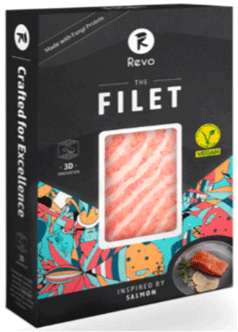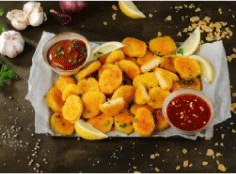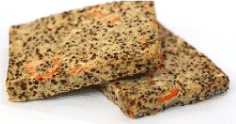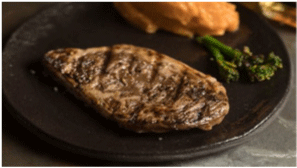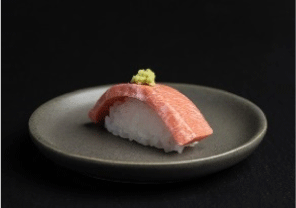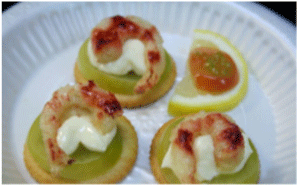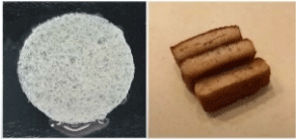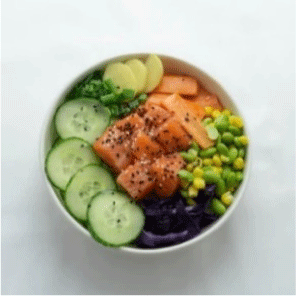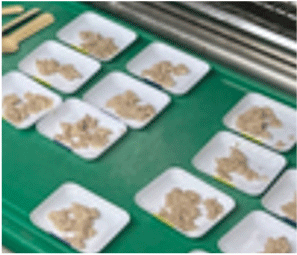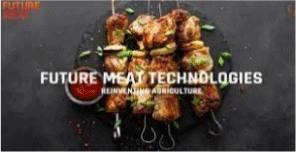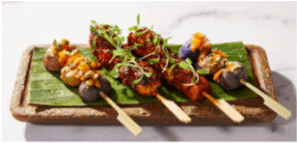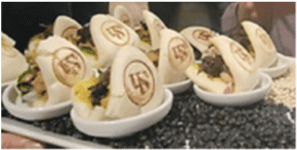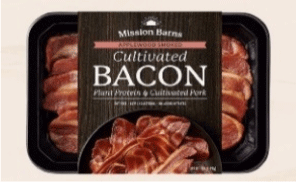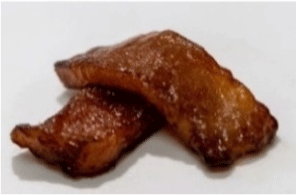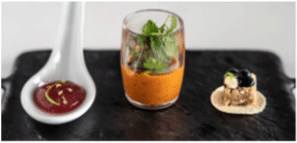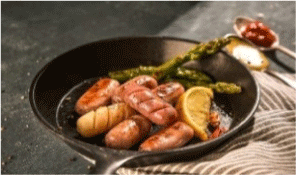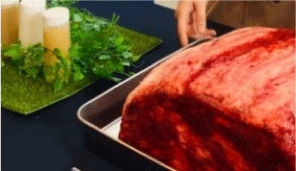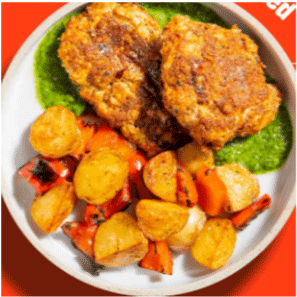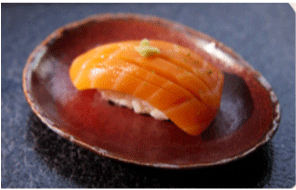Introduction
Animal proteins are used and consumed in a variety of foods not only because they have high nutritional value but also because of their unique texture, taste, and flavor (Day et al., 2022). In particular, meat is a major food resource that provides humans with high-quality protein, which contains a higher proportion of essential amino acids compared to other foods, such as vegetables and grains, and also provides several fatty acids as well as trace vitamins and minerals that are essential for the human body (Day et al., 2022; Godfray et al., 2018). Therefore, meat consumption plays an important role in physical development and maintenance, and its value as a food resource is expected to be preserved as it is associated with cultural, social, and individual preferences (Gorbunova, 2024). However, despite the large-scale development of animal husbandry to meet the growing global meat consumption, many problems have been raised, such as environmental pollution caused by manure and carbon dioxide emissions from livestock, adult diseases caused by excessive meat consumption, emerging infectious diseases among animals, and the low efficiency of converting grains into animal protein (Boukid and Gagaoua, 2022; Godfray et al., 2018). These issues are driving the demand for the development and supply of protein foods that can replace meat (Day et al., 2022).
In the history of meat analogs development, peanut-based meat analogs were created in the 1896, and texturized vegetable proteins were developed and began to be produced in the 1960s (Maningat et al., 2022). In 1964, the British company Rank Hovis McDougall succeeded in developing the processed mycelia (called mycoprotein) of a Fusarium graminearum strain (Khan et al., 2024). This product has been sold under the name Quorn® since 1985, and since then, various forms of alternative foods have been developed, such as insect-based and cell culture-based meat analogs (Khan et al., 2024; Maningat et al., 2022). Initially, this product was not commercially successful due to its different texture, taste, and flavor from traditional meat, but it is gradually developing industrially (Boukid and Gagaoua, 2022).
Recently, plant-based, insect-based, algae-based, mycoprotein-based, and cell-based meat analogs have been proposed as meat analogs to replace animal protein (Boukid and Gagaoua, 2022). The global meat analog market, by region, is dominated by developed countries, followed by North America (44.6%), Europe (28.8%), Asia-Pacific (18.1%), and the rest of the world (8.5%), with investment, technological development, and consumption being driven by North America and Europe (Park et al., 2019). In 2023, the meat analog market size of South Korea is 17th in the world, approximately United Sates dollars (USD) 88.46 million, with China in first place and the United States (U.S.) in second (Statista, 2024). The South Korean meat analog market is mostly composed of plant-based meat analogs, with still only a few other protein products, although research is underway to develop new products (Cho et al., 2022). From the global perspective of the growth rate of the meat analog market size by type from 2019 to 2025, insect-based meat analogs accounted for 22.7%, followed by cell-based meat analogs (19.5%), algae-based meat analogs (8.3%), plant-based meat analogs (8.1%), and, lastly, mycoprotein-based meat analogs (5.0%; Park et al., 2020).
Despite the significant increase in research related to the development of materials that can replace traditional meat products and the related market, the industrialization of the technology has been insufficient, and meat analogs have not proven that their taste and flavor are equivalent to traditional meat products. In particular, the processing technologies developed to improve the appearance, texture, and flavor of meat analogs require long processing times and high production costs, and product safety assessments are required for the use of wheat gluten and synthetic materials, such as methylcellulose, used in processing (De Angelis et al., 2024; Ozturk and Hamaker, 2023). Depending on the alternative protein used as a raw material for meat analogs, improvements in nutritional components, visual and sensory characteristics, and allergy issues compared to conventional meat are required (Dinali et al., 2024; Zahari et al., 2022). Therefore, this study analyzed the main ingredients and characteristics of meat product substitutes sold in the global market, with the aim to provide information that can be used for the development of meat analogs in the future.
Traditional High-Protein Foods and Their Characteristics
Tofu originated in China around 2,000 years ago and is believed to have been introduced to Korea before the end of the Goryeo Dynasty (Anjum et al., 2023; Shin, 2011). Soybeans contain about 32%–45% protein and an excellent composition of essential amino acids, including an even distribution of lysine and tryptophan, which are rare in cereals (Nowacka et al., 2023; Stein et al., 2008). Tofu, which is processed from soybeans, is an important plant food used as a valuable source of protein, replacing relatively expensive animal foods (Ali et al., 2021; Cai et al., 2021; Stein et al., 2008). Tofu is generally made by grinding the beans, mixing them with water, and boiling them. Then, the tofu coagulant, which contains divalent cations, binds and precipitates with negatively charged soy proteins, such as glycinin (Ali et al., 2021; Chen et al., 2023). The manufacturing process can be broadly divided into the production of soy milk from soybeans and the production of tofu from soy milk. First, soybeans are ground with water to produce soy milk, which is then produced into tofu through a series of processes, such as heating and fat removal (Chen et al., 2023; Huang et al., 2022). Firm tofu, soft tofu, silken tofu, oiled tofu, and fried tofu can all be prepared from soy milk (Anjum et al., 2023). The type of tofu is dependent on the heating time, coagulant, and hardening method during the manufacturing process. In addition to regular tofu, various types of processed tofu are now available that have undergone additional processing steps, such as fermentation, freezing, and fortification, and often, the health benefits have been enhanced by enrichment with other functional ingredients (Anjum et al., 2023; Cai et al., 2021).
Tempeh, a traditional fermented food from the Indonesian island of Java, refers to a mass of white mycelium that is peeled from soybeans and fermented by a fungus (Rhizopus sp.) to form a cake-like mass with a meat-like texture (Nout and Kiers, 2005). During fermentation, the enzymes decompose the proteins, fats, carbohydrates, and phytic acids into small molecules, generating a more nutritious and easily digestible product compared to unfermented soybeans (Borzekowski et al., 2019; Nout and Kiers, 2005). Tempeh is consumed not only in Indonesia but also in many other countries, such as the U.S., South Korea, Japan, England, and Singapore (Maitresya and Surya, 2023). Uncooked tempeh is composed of 55.3% moisture, 20.8% protein, 13.5% carbohydrates, 8.8% fat, and 1.4% dietary fiber, making it a food that can provide a notable quantity of protein (Indonesian Food Composition Data, 2017).
Tempeh is made from dehulled soybeans using mechanical wet dehulling with a disk impactor. Traditional equipment and seeds are used in small-scale production. After removing the hulls and dust, 0.5% lactic acid or 0.25% acetic acid may be added to prevent softening of the soybeans during soaking, or the previously used fermented soaking water (5% concentration) is sometimes used (Nout and Kiers, 2005). Tempeh is commonly made from yellow-seeded soybeans, which are the preferred raw material for its production (Nout and Kiers, 2005). Currently, for tempeh production in Indonesia, several local soybean varieties, as well as black-eyed beans and winged bean seeds, are also used to produce a variety of indigenous foods (Maitresya and Surya, 2023). After soaking and dehulling, the soybeans are cooked, inoculated with Rhizopus spores, and then allowed to ferment. Primarily, tempeh is made by fermentation with Rhizopusoryzae, Rhizopus oligosporus, Rhizopusmicrosporus, and Rhizopusstolonifera. Additionally, Aspergillus oryzae is often present in the fungal mixture used for fermentation (Borzekowski et al., 2019). A. oryzae is extremely enriched with genes involved in biomass degradation, primary and secondary metabolism, transcriptional regulation, and cell signaling, which widely used in the food industry beyond commercial use (Kobayashi et al., 2007). Temperature is an important factor in fermentation, which occurs within the temperature range of 25°C 37°C. The higher the temperature, the faster the fermentation rate, especially the growth rate of R. oligosporus (Nout and Kiers, 2005). In conclusion, the essential fermentation conditions for tempeh fermentation are adequate moisture, oxygen, and heat (Nout and Kiers, 2005).
Seitan has been used for centuries in Buddhist cultures of China as a protein substitute for meat in Asian, vegetarian, and Buddhist cuisines. It is also known as Miànjïn in China, Milgogi in Korea, and different names in other countries, such as Japan and Vietnam (Kim, 2019; Rödl, 2019). Unlike tofu and tempeh, seitan is made from wheat gluten. Wheat gluten is an insoluble protein with a meatier, chewier, or stringier texture than tofu (Bakhsh et al., 2021; He et al., 2020; Kim, 2019).
Seitan is made by hydrating wheat flour to activate the gluten, removing the starch, and then using the gluten powder. When mixed with water, the interactions between gluten proteins rearrange to form a network of polymers, and the covalent and non-covalent bonds between gliadins and glutenins give the flour dough its characteristic viscoelasticity that imitates the texture of meat (Maningat et al., 2022). Depending on how it is processed, seitan can vary in nutritional composition and in vitro protein digestibility. A nutritional analysis of raw seitan and fried seitan prepared using different frying methods showed that the moisture content and fiber did not change significantly, but the protein content of raw seitan was about 10% higher than that of fried seitan. The carbohydrate content of the fried treatment with flour was higher than the other treatments, and the in vitro protein digestibility of the fried treatments was lower compared to raw seitan (Anwar and Ghadir, 2019).
Current Status and Characteristics of Meat Analogs Produced through Cutting-Edge Food Technology
Plant-based meat analogs can reduce land use and greenhouse gas emissions compared to conventional livestock farming. They also consume fewer resources than meat and produce fewer environmental pollutants, such as manure, making them more environmentally friendly (Arora et al., 2023). Some of the various sources of meat analog substitutes include soy, wheat gluten, kidney beans, chickpeas, rice, and corn, but products based on soybean protein are among the top choices for non-animal protein (Cho et al., 2022). Containing about 40% protein per 100 g, soybeans are a valuable source of protein (Nowacka et al., 2023). Meat analogs vary in flavor and nutritional content depending on the raw materials and processing methods used, and they exhibit differences in functionality based on specific technologies (Cho et al., 2022). Therefore, by varying the processing methods or technologies, new combinations can be created to improve the characteristics and texture of meat analogs. Extrusion processes, such as the dry or low-moisture method, high-moisture method, and steam method, are widely used for structuring plant-based proteins (Lee et al., 2024a; Maningat et al., 2022). Extrusion processes have many economic advantages in terms of structuring and differentiating plant-based meat analogs, especially high-moisture extrusion, which is more widely used than low-moisture extrusion due to superior structurization (Högg and Rauh, 2023). The second most commonly used plant-based protein sources after soy protein are wheat protein, which mainly contains gluten, and legumes, such as peas and chickpeas, which contain proteins like globulin, albumin, and glutelin (Nowacka et al., 2023).
Tables 1 and 2 show the most plant-based meat-like products sold by country. Products from five countries with large markets for plant-based meat-like products—China, the U.S, the United Kingdom (U.K.), Russia, and Germany—and South Korea were investigated (Statista, 2024). As of Oct. 2024, China’s funding of plant-based meat analog research (governments vs. industry, including breakdowns by country) is 3.4 million USD across 7 projects, which is relatively modest (Airtable, 2024). However, regarding the revenue in the plant-based meat segment of the food market, China is leading with 2,130 USD million (Statista, 2024). The U.S. follows with 1,360 billion USD in sales (Statista, 2024). For research about plant-based meat analogs, the U.S. has invested 305.9 million USD across 246 projects, indicating active support for the development of plant-based analog industries (Airtable, 2024). The U.K, with a market sales figure of 697 million USD, has invested 126.9 million USD across 131 projects (Airtable, 2024; Statista, 2024). Russia has a market turnover of 676 million USD, while Germany has a market turnover of 661 million USD and investments of 68 million USD (Airtable, 2024; Statista, 2024). Additionally, South Korea, despite showing a lower market sales figure of 86 million USD compared to other countries, has demonstrated significant investment with 23 million USD, indicating potential for growth through expanded support (Airtable, 2024; Statista, 2024).
The top two marketplaces with the largest global retailing (Amazon: U.S, Walmart: China, U.K, Russia, Germany, and South Korea) were used as search engines, and the top five selling products by country were selected (Deloitte, 2023). Hoosier Hill Farm’s “Textured vegetable protein” product was the top-selling product in China, the U.K, Germany, and South Korea (Table 1). Plant Basics’ “Hearty Plant Protein” is the brand with the highest number of rankings, with products in chunks, strips, and crumbles ranked in six categories (Table 1). When we checked the country of origin of the listed products, we found that the U.S. was the most represented with 21 products, followed by Canada and the Philippines with 1 product each (Table 2). The most common types of plant-based meat analogs sold were steak (6), ground meat (5), and patties (4), along with sausages, hams, meatballs, nuggets, and jerky (Table 2). There were also two products listed that replaced seafood with plant-based ingredients (“Plant-based tuna” products manufactured by Good Catch, Table 2). As mentioned earlier in this section, almost all plant-based meat analogs contain soy-based protein, often in combination with wheat gluten (Table 2). This is done to improve the texture of the plant-based meat analogs, and many other ingredients can be found in the formulation, such as methylcellulose, dextrin, starch, soybean oil, glutamic acid, dietary fiber, yeast extract, salt, sugar, soy sauce, or spices (Table 2). To compensate for the lack of fat, coconut oil, canola oil, palm oil, sunflower oil, algal oil, and corn oil are used (Kim et al., 2019; Maningat et al., 2022; Table 2).
Plants as a food contain anti-nutritional factors (ANFs), such as trypsin inhibitors, protease inhibitors, tannins, lectins, phytates, and saponins, which have an inhibitory effect on digestion through the inactivation of digestive enzymes and the formation of specific sugar-protein complexes (Nowacka et al., 2023; Samtiya et al., 2020). Since most meat analogs contain wheat or soybeans as their main ingredients, preventing ANFs that inhibit the utilization of plant-based proteins is a major challenge to be addressed when manufacturing meat analogues. Processing methods such as fermentation, germination, cooking, soaking, and milling can effectively reduce the impacts of ANFs, and traditional high-protein foods such as tofu, tempeh and seitan are also foods with increased absorption rates of plant-based proteins by applying these processing methods (Nowacka et al., 2023; Samtiya et al., 2020). Wheat or soy, which are included in plant-based meat analogs, they have the potential to cause allergies to legumes, gluten, or wheat (Lima et al., 2023; Nowacka et al., 2023). Wheat should be avoided by people with gluten-related disorders, such as dermatitis herpetiformis and celiac disease, an immune-mediated intestinal disorder caused by prolamin in gluten acting as an immune-mediated reactive substance. These disorders can also cause gluten ataxia and wheat allergy (Jones, 2016; Kim, 2019). Legumes also contain a large amount of ANFs, such as trypsin inhibitors, tannins, and saponins, which have an inhibitory effect on digestion through the inactivation of digestive enzymes and the formation of specific sugar protein complexes (Nowacka et al., 2023). In addition, it is difficult to completely mimic meat products due to the lack of texture and the presence of the distinct soy flavor, so the palatability of the products is not as good as meat (Kumari et al., 2024; Wang et al., 2022; Yoo et al., 2020). Therefore, it is necessary to develop technologies to reproduce the taste and texture of meat using various plant materials other than soy to develop meat analog products similar to real meat.
In 2013, the Food and Agriculture Organization of the United Nations (FAO) warned of a food crisis due to explosive population growth and global warming and proposed “edible insects” as an alternative food source (FAO, 2013). Edible insect companies around the world are raising insects, mainly crickets, grasshoppers, and mealworms, for their use as powders and protein extracts (Tavares et al., 2022). Insects contain approximately 7%–48% protein, with some species containing up to 85% protein (Nowacka et al., 2023; Nowakowski et al., 2022). Additionally, mealworms, one of the most commonly consumed edible insects, have a fat content ranging from 31.65% to 43.21% on a dry matter basis and boast an n6/n3 ratio of 42.17, making them a high-quality energy source (Benzertiha et al., 2020). Many other insect species have also been found to contain high levels of polyunsaturated fatty acids (Nowakowski et al., 2022). In addition to protein and fatty acids, insects also contain higher levels of micronutrients, such as iron, zinc, and vitamin B12, compared to beef, pork, and chicken (Smith et al., 2021). Notably, house crickets contain approximately 5.4 mg of vitamin B12 per 100 g, which is about 10 times higher than that of beef (Nowakowski et al., 2022).
One of the great advantages of insect farming is that it is less resource-intensive than traditional meat production, as it uses relatively less water, feed, and land, and has low greenhouse gas emissions, which can minimize environmental pollution (Akhtar and Isman, 2018; Nowacka et al., 2023; van Huis and Oonincx, 2017). In addition, insects have a high reproductive rate and fast growth rate, making them of great value as a potential future protein source (Akhtar and Isman, 2018). In particular, the high digestibility of insect protein (76%–98%) makes it an excellent substitute for meat protein (Nowacka et al., 2023). In addition to their use as protein powders, insect-based meat analogs are also being incorporated into snacks such as sweets, energy bars, and chocolates, in pasta and bread products, and their use in the development of meat analogs is growing rapidly (Ismail et al., 2020; Kim et al., 2022). In Germany, companies such as Bold Foods and Bugfoundation have launched protein patties made of buffalo worms (larval form of Alphitobius diaperinus), and in the the Netherlands, Protix provides frozen and dried forms of the insect to be used in different food categories (Mancini et al., 2022; Shivanna, 2023). In South Korea, the Korea Edible Insect Laboratory (KEIL) is one of several companies in the insect-based meat analogs business, and large companies such as CJ Cheil Jedang and Nongshim are also researching the availability of edible insects (Shin et al., 2018).
We surveyed insect-based products that are currently marketed as meat analogs (Table 3). We found that most of them are sold in their original form, and there are only a few cases where they are consumed as powders, energy bars, and other products and served as finished dishes like meat (Imathiu, 2020). Compared to other meat analogs, the variety of products made from insect-based meat analogs is narrow as the companies tend to sell only one type of product. We identified a total of six insect products currently marketed as meat analogs, with four using buffalo worms and two using mealworms (larval form of Tenebrio molitor), and all containing less diverse materials compared to other edible insect species (Table 3). Among the plant-based meat analogs, five products were in the form of patties, and one was in the form of meatballs (Table 3). All products take the form of processed meat products that can hide the shape of insects, and various additives such as pepper, celery, garlic, and smoky spices are used to mask the unique off-flavor of insect protein (Table 3). To compensate for the lack of texture of insect meat analogs, the majority of the products also included plant-based ingredients, such as wheat gluten, soy protein, chickpeas, and quinoa.
Currently, various species of insects are consumed in many countries around the world, but the actual consumption of insect-based meat analogs is low due to the low consumer preference for insects as a material (Anusha and Negi, 2023). Consumer sensory evaluations suggest the “unattractive” features of insect-based meat analogs are their unique rough texture and fishy off-flavor (more fishy in terms of aroma and taste compared to traditional meat products; Mishyna et al., 2020). However, a survey by the Spire Food Group and the North American Coalition for Insect Agriculture (NACIA) found that about 50% of Western consumers are willing to try insects in their diet (Food Dive, 2022). In addition, a survey of more than 1,000 U.S. consumers conducted by Oklahoma State University found that one-third of consumers would be willing to eat food made using crickets if the taste and safety of the food were guaranteed (Reed et al., 2021).
Consequently, it has been suggested that the solution for improving the acceptance, production, and consumption of edible insects lies in the development of processing technology. In fact, processing insects into powder form can increase utilization and improve consumer preference (Sánchez-Velázquez et al., 2024). Because of the large lipid content in insects, which can accelerate decay and make transportation and storage of raw materials difficult, it is important to utilize various processing technologies to increase the applicability of insects as food materials (van Huis, 2022). To extract insect proteins, traditional extraction methods using water, salt, solvents, and alkalis, as well as more modern extraction methods using enzymes, ultrasound, microwaves, and electromagnetic fields, are being applied (Lee et al., 2024a; Pan et al., 2022). Various extraction methods for insect proteins are effective in enhancing their functional properties. Removing fats during the extraction of insect proteins, compared to whole insects in powder form, can improve foaming capacity and foam stability (Gravel and Doyen, 2020). Additionally, removing chitin enhances the emulsifying properties of fats, thereby improving the application of insect proteins as a food ingredient after processing (Purschke et al., 2018). Components such as chitin, a polysaccharide that makes up the exoskeleton of insects, hexamerin 1B precursor found in insect hemolymph, or arginine kinase have the potential to cause allergies (Jeong and Park, 2020; Pick et al., 2008; Srinroch et al., 2015; Yao et al., 2009). Consequently, when using insects as food, the potential risk of allergic reactions must be kept in mind, and the product’s suitability for consumption after manufacture must be evaluated.
The market for insect protein is steadily growing, with the global market valued at 1,230 million USD in 2023 and projected to reach 7,620 million USD by 2033 at a compound annual growth rate (CAGR) of 20% (Precedence Research, 2024). In particular, North America held a 34% share of the insect protein market in 2023, making it the largest consumer, and it is expected to grow at a CAGR of 20.03% through 2033 (Precedence Research, 2024). The aggressive growth of the insect industry and increasing demand for protein are driving the necessity for mass-production technologies. Automating the production and processing of insects can achieve cost efficiency and enhance competitiveness (Dossey et al., 2016; Kröncke et al., 2020). Specifically, utilizing information and communications technology-based smart farms for insect rearing monitoring and environmental control can create optimal breeding conditions, thereby promoting growth and shortening development periods (Seok, 2022).
However, while the insect protein market in the U.S. is growing, institutional arrangements at the national level are insufficient. The U.S. Food and Drug Administration (FDA) has stated that insects can be used as food but has not specified particular insects. Instead, insects are considered food if they comply with existing food regulations, including pre-market review and FDA approval (Larouche et al., 2023). In contrast, the European Union has approved crickets, mealworms, and locusts for human consumption and has implemented stringent safety measures for producers and retailers (Bloomberg, 2021; Stull and Patz, 2020). Therefore, the effective utilization of insect-based proteins with excellent nutritional value will require establishing a systematic system and conducting research for full-scale product sales and market expansion.
Unlike the eating habits of East Asia (e.g, Korea, China, Japan), an area where a wide variety of algae is consumed by humans, in most countries, algae are a relatively underutilized food source due to an aversion to their texture or appearance (Govaerts, 2023). Algae, which are classified as red, green, or brown algae based on their major pigments, have high concentrations of essential amino acids (Diaz et al., 2023). On a dry weight basis, red algae have been found to have a high protein content of up to 47%, green algae 32%, and brown algae 26%, and their high yields per area make them a low-cost alternative protein source (Forster and Radulovich, 2015; Pereira, 2011). These algae do not require land or fertilizer when grown and play an environmentally friendly role by absorbing carbon as they grow (Sayre, 2010). Therefore, using protein-rich algae as a main ingredient in alternative meat products can add value to discarded algae. Spirulina, a member of the cyanobacteria family with a protein content of up to 63%, contains balanced essential amino acids and is an excellent protein source with high digestibility (Lupatini et al., 2017; Soni et al., 2021). In order to use algae-based proteins as food ingredients, it is necessary to increase the extraction yield and concentrate the protein through chemical extraction techniques using enzymes, acids, and alkalis or physical extraction methods, such as freeze-thaw, osmotic shock, and compression (de Souza Celente et al., 2023). Heme, a complex of iron and porphyrin, can be biosynthesized by algae themselves or obtained by seawater uptake (Hogle et al., 2014). Heme molecules are structures that are also present in the myoglobin and hemoglobin of meat. When the heme cofactor is exposed during cooking, it reacts with amino acids, vitamins, and sugars in the tissues and acts as a catalyst to generate the characteristic flavor of meat (Fraser et al., 2018). Leghemoglobin, which can be obtained from plants, has a similar structure to heme and has been confirmed to perform the same catalytic role. Therefore, heme in seaweed can also be effective in imitating the flavor of meat in meat analogs using the same principle as above (Fraser et al., 2018).
Currently, algae-based meat analogs are manufactured in a relatively diverse range of countries, including the U.S, the Netherlands, South Korea, Thailand, Ireland, and Germany (Table 4). Seaweed-based meat-like products are often made from kelp, seaweed, Spirulina, and carrageenan, which, in many cases, are labeled collectively as “seaweed” or “sea moss extracts” rather than the exact variety (Table 4). This is believed to be because many countries in which the consumption of algae by humans is rare, “seaweed” is used as the collective term without distinguishing between seaweeds, and the scientific names are generally not listed among the food ingredients (exceptionally, there are meat analogs using scientific names in ingredients: Viva Maris ALGEN Wiener); but it was not possible to confirm accurate information on the processing method used to obtain the seaweed-based protein and the addition ratio. Similar to the previous type of meat analogs, most algae-based meat analogs contain plant-based soy protein, flour, starch, sunflower oil, or methylcellulose (Table 4). Carrageenan, which is added to algae-based meat analogs and many other meat analogs, is an algae-type hydrocolloid that is often used to bind ingredients and improve product texture (Majzoobi et al., 2017). The addition of carrageenan can reduce drip loss by improving the water holding capacity and hardness of sausages (meatless, low-salt, low-fat) and can be used in a variety of foods due to its excellent gelling, emulsifying, and stabilizing effects (García-García and Totosaus, 2008; Majzoobi et al., 2017).
Despite these benefits, several issues need to be addressed before algae can be used as a major protein substitute. For example, the characteristic off-odor and color of algae can reduce the sensory preference for products made from algae-based meat analogs (Espinosa-Ramírez et al., 2023). Moreover, excessive algae consumption can lead to excessive iodine intake, which has the potential to cause hyperthyroidism (Cherry et al., 2019). In a study involving women with an average age of 58, it was found that taking capsules containing 5 g of seaweed (Alaria esculenta), which included 475 μg of iodine daily for 7 weeks, increased serum thyroid-stimulating hormone levels from 1.69 to 2.19 μU/mL (Murai et al., 2021). This increase can potentially lead to thyroid dysfunction. Accordingly, in the U.K, the iodine content in seaweed-containing foods is disclosed, and iodine intake exceeding 600 μg/day is limited to prevent potential health risks (Cherry et al., 2019). Therefore, it is crucial to control the iodine content when producing algae-based meat analogs and to avoid excessive consumption of such ingredients. However, currently, most algae-based meat analogs are manufactured with soy, grain, or their derived proteins, as well as various types of vegetables (Table 4). Phytochemicals in vegetables containing chlorine (e.g, isothiocyanates from cruciferous plants such as broccoli and cabbage, isoflavones from soybeans) can inhibit the absorption of iodine, and consuming seaweed as an extract (e.g, in broth) can reduce iodine intake by about 50% (Murai et al., 2021; Zava and Zava, 2011). The risk of contaminants from marine pollution should also be considered, as heavy metals can be adsorbed and present on the surface of algae, and there is a risk of heavy metal poisoning in cases of excessive consumption (Nowacka et al., 2023; Wells et al., 2017). Consideration must also be given to components such as phycobiliprotein and phycoerythrin in red algae, which are potentially allergenic (Thiviya et al., 2022). However, seaweed is a material that can provide excellent protein. Although the possibility of these ingredients remaining in the process of processing seaweed into food is relatively low, the above dangerous ingredients can be screened out in the process of verifying the food safety of the final product as a meat protein analog. Additionally, it will be important to identify safe algae-based meat analog manufacturing methods through research on the safety and tolerability of processed algae-based proteins.
Mycoprotein-based meat analogs are a common ingredient for making meat analogs (Saeed et al., 2023). Extracted from mushrooms or molds, mycoproteins can be obtained in large quantities at the laboratory level by fermenting fungal mycelium on a carbohydrate substrate (Saeed et al., 2023). Mycoprotein contains essential amino acids, such as leucine, valine, and threonine, and it provides 44 g of protein and 24 g of fiber per 100 g of dry weight (Saeed et al., 2023). Notably, the high fiber content in mycoprotein forms delicate layered structures and fiber gel complexes, which effectively mimic the texture of meat analogs, especially chicken breast (Hashempour-Baltork et al., 2020; Kurek et al., 2022). Various fungi strains are used in mycoprotein production, and they exhibit diverse quality characteristics depending on the fungi type and fermentation conditions (Hashempour-Baltork et al., 2020). Koji protein is produced by solid-state fermentation of A. oryzae and is a representative mycoprotein and a high-protein food (Daba et al., 2021). Mycoprotein derived from A. oryzae represents a protein content of 37% 44%, whereas raw mushrooms have a protein content of 1% 5% (Manzi et al., 1999; Rousta et al., 2021). Additionally, it also offers numerous benefits, such as a rich vitamin content, high energy efficiency, and relatively low calories count, and it has higher essential amino acids than plant-based protein because of its high protein digestibility-corrected amino acid score (Gamarra-Castillo et al., 2022; Hashempour-Baltork et al., 2020; Majumder et al., 2024). Quorn, a multinational food company specializing in the production of products made from mycoprotein, currently sells its products in 17 countries, including the U.S., the U.K, and Australia, so its market penetration rate is already relatively high (Finnigan et al., 2019).
In our research of mycoprotein-based products, we identified several mushroom-based meat analogs, but we did not specify these products (data not shown). This is because, as mentioned above, raw mushrooms have a low protein content and are often added to improve the texture of vegan products rather than to replace the protein in traditional meats. Our research shows that there are currently nine companies selling mycoprotein, four of which are based in the U.S. (Table 5). The products were added with mycoprotein-based meat analogs labeled as mycelium, mycoprotein, Fy ProteinTM (Nutritional Fungi Protein), koji, and others (Table 5). Interestingly, one of the mycoprotein-based products is a protein replacement for tempeh—one of the traditional non- meat analogs—with 30% of the ingredients being mycoprotein (Table 5). Mycoprotein-based meat analog substitutes also contain a mix of milk protein, soy protein, and starch, and the lack of fat is met by canola, olive, coconut, sunflower, and palm oil (Table 5). Among the mycoprotein-based meat analogs, there is a greater number of bacon, ham, roast meat, and other forms of meat in which meat texture is of particular importance to acceptability (Table 5).
Although mycoprotein is relatively simple to use, its large-scale production using culture methods, such as solid-state fermentation, submerged fermentation, and surface culture, is capital-intensive and requires safety verification of food by-products that can be utilized during solid-state fermentation (Majumder et al., 2024). In addition, continuous consumption of mycoprotein has the potential to cause nausea, vomiting, diarrhea, hives, and anaphylactic shock due to mycelium-based toxins, such as aflatoxin, mycotoxin, and fumonisin (Hashempour-Baltork et al., 2020; Jacobson and DePorter, 2018). Nevertheless, the growth prospects for mycoprotein are bright, as it contains enough protein to replace meat protein and is a useful ingredient for mimicking meat-like textures, which is one of the main challenges manufacturers face when developing convincing meat analogs. Meat analogs manufactured by mixing mycoprotein and proteins based on other raw materials can be effective in supplementing nutritional and taste aspects and complementing the texture of the product.
Cell-based meat analogs are obtained by isolating stem cells from living animal tissues and growing them using cellular engineering techniques. Cell-based meat analogs have been studied since the early 20th century, starting with embryonic chick heart muscle (Carrel, 1912; Lee et al., 2024c). In 2013, Mark Post introduced cell-based meat analogs made from cultured cow tissue cells (Mosa Meat, 2013), and the world’s first hamburger made from cell-based meat analog was tasted (Post, 2014a; Post, 2014b). In 2016, U.S. startup Upside Foods (formerly known as Memphis Meats) introduced the first meatballs made from beef cell-based meat analogs. The following year, the world’s first cultured chicken and duck meat were created, and in December 2018, Israel’s Aleph Farms produced the first laboratory-grown muscle-like pork steak (Business Insider, 2016; Dezzen, 2018; FoodNavigator-USA, 2017; Lee et al., 2023a). Then, Eat Just, another U.S. startup, produced chicken cell-based meat analogs, a blend of 70% cultured chicken cells and plant protein, and in December 2020, became the first company in the world to receive a formal license from the Singapore Food Authority (SFA) to produce and sell chicken cell-based meat analogs (The Guardian, 2020). In June 2023, chicken cell-based meat analogs developed by Upside Foods and Eat Just’s subsidiary, GOOD Meat, were approved for marketing by the U.S. Department of Agriculture (USDA) and the FDA, respectively, indicating the potential for further commercialization of the cell-based meat analogs industry (Reuters, 2023).
Because there are no commercially available cell-based meat analogs, we examined the number of cell-based meat analog prototypes announced by companies over a 5-year period from April 2019 to March 2024 (Table 6). Of the total 24 products, the U.S. announced the most prototypes (7), followed by South Korea with 6 (Table 6). We also found that cell-based meat analogs often do not clearly specify the form of the product being marketed, so in these cases, we categorized the product as “meat.” Eight of the products were beef, four were chicken, three were pork, and one was foie gras (Table 6). Unusually, seafood accounted for 25% of the total products (6), indicating a relatively high proportion of seafood substitute meat development, and the types of seafood substitutes included salmon, tuna, shrimp, and lobster (Table 6). We also found that cell-based meat analogs, like other meat analogs, are often blended with plant-based protein ingredients, probably to compensate for the scarcity of cell-based meat analogs, which are relatively more expensive to produce, rather than to compensate for product texture, as with other meat analogs (Table 6). Consequently, we were unable to determine the actual amount of cell-based meat analog protein in almost all of the cell-based meat analogs we examined (Table 6).
Cell-based meat analogs can theoretically be produced without the slaughter of animals, and in this context, they have the potential to reduce religious restrictions, the use of soil and water resources, and the risk of livestock infectious diseases (Bhat et al., 2014; Lee et al., 2023a). Cell-based meat analogs are also listed as one of the sustainable foods not only because nutritionally beneficial meats can be selected and produced in the production process but also because cells are cultured in vitro, so they are not affected by external environmental factors and can be continuously produced in a certain quantity (Bhat et al., 2014; Kepnews, 2021). However, despite the various potential benefits of cell-based meat analogs, there are technical limitations to their commercialization, such as a long production process and high cost compared to plant-based meat analogs (Lee and Kim, 2018). More research is needed to overcome these limitations. Additionally, research on cell-based meat analogs is primarily focused on innovations for scalable muscle tissue culture, with fat, blood, and connective tissue also being important but often overlooked components of this technology (Slate, 2015). In addition, there are limitations to developing serum-free cell culture media or replacing other animal-derived additives that are essential for cell culture (Stout et al., 2022). Finally, in order for cell-based meat analogs to be commercialized as a new food source, they must adhere to food certification procedures, and it is necessary to establish standards for safety and nutritional content (Mariano et al., 2023; Oh et al., 2021).
Future Perspectives
Interest in meat analogs has been gradually increasing, and the global alternative food market size has accelerated and is estimated to reach 290 billion USD by 2035 (Tyndall et al., 2024). In addition, if meat analogs that perfectly mimic traditional meat are developed, the continued growth of the meat analogs market can be accelerated. However, several factors are hindering the market growth of currently produced meat substitutes. A representative example is that they do not perfectly embody the sensory characteristics of traditional meat, such as texture, aroma, color, and flavor. In response, research and technology development of processing technologies, raw materials, and additives to increase consumer satisfaction and preference are actively being conducted worldwide (Xiong, 2023). In order to improve the texture of meat substitutes, delicate processing technologies and additives, such as binders, are being developed to replicate the long and thick fiber structure characteristic of animal proteins (Ozturk and Hamaker, 2023). Regarding the processing technology for plant-based alternative foods, various processing methods such as extrusion, electrospinning, freeze-structuring, shear cell technology, and 3D printing have been developed to form a more solid fiber structure (Dinali et al., 2024; Ozturk and Hamaker, 2023). In particular, the extrusion method is a method of structuring through mixing melted protein molecules under high temperature, high pressure, and shear conditions, and low-moisture and high-moisture extrusion methods are widely used because of their high resource- and energy-efficiency (Dinali et al., 2024; Schmid et al., 2022). Additives are also used to increase the binding strength of plant-based alternative meat, which easily collapses due to low hardness and viscoelasticity (Marczak and Mendes, 2024). Additives act as binders when forming fiber structures, and methylcellulose and wheat gluten, which have the characteristics of high binding strength, low cost, and high availability, are widely used. However, methylcellulose is chemically synthesized from cellulose using a concentrated sodium hydroxide solution, and wheat gluten may cause allergies in consumers, which may raise concerns about food safety (Ozturk and Hamaker, 2023). Therefore, to avoid such concerns, natural additives, such as corn zein or dietary fiber, can be developed to maintain the fibrous structure of alternative meat foods and increase hardness, texture, and mouthfeel (Marczak and Mendes, 2024; Ozturk and Hamaker, 2023; Twarogowska et al., 2022). In a study by Ong et al. (2021), it was discovered that one of the plants, jackfruit (Artocarpus heterophyllus), has a structure that can mimic marbling in meat, and a cultured meat scaffold was manufactured using color changes caused by the oxidation of natural polyphenols hidden in the vacuoles of jackfruit cells. The development of these additives can be used to improve the texture and mouthfeel of alternative meat products, as well as the color and remove off-flavors (Ong et al., 2021). Off-flavors and colors are factors that greatly affect consumer preference in sensory evaluations. Off-flavors are mainly removed using spices with antioxidant properties, which delay oxidation reactions and the Maillard reaction involved in flavor formation, thereby reducing unpleasant volatile compounds (Yuan et al., 2023). In order to imitate a color similar to cooked meat, natural colorants and leghemoglobin are used (Ryu et al., 2023). Mishyna et al. (2020) removed off-flavors using spices and herbs, such as garlic, basil, chili, and lemongrass, in insect-based alternative foods and representative plant-based alternative food brands. Beyond Burger® and Impossible Burger® mimicked the color of traditional meat using beet juice/powder or soy leghemoglobin (Gastaldello et al., 2022; Mishyna et al., 2020). Finally, flavor is an important sensory characteristic that determines the quality of traditional meat, and flavor ingredients are essential in meat-like products because they act as a texture and binding agent. In order to mimic the flavor of meat, proteins and fats are processed by mixing them appropriately. As briefly mentioned in the mechanism of removing off-flavors above, flavors are changed by volatile or nonvolatile compounds generated by pathways such as oxidation reactions and the Maillard reaction. Because these compounds also originate from fatty acid oxidation processes, fat is important in determining flavor (Yuan et al., 2023). Vegetable oils, which are used as raw materials to replace animal fats, provide excellent health benefits and processing properties. These vegetable oils can be mixed with polysaccharides and then processed into proteins to obtain a protein polysaccharide network structure, which can enhance the binding effect of fat and protein and improve the shape, texture, and flavor (Zhao et al., 2022). A study by Lee et al. (2024b) designed compounds of flavor components released when traditional meat is cooked and applied them to the scaffold, showing that the flavor properties of cultured meat were similar to those of beef.
Awareness of meat analogs can act as an important factor in changing consumer dietary preferences. Results from a survey of Dutch and Finnish consumers showed that the intention to purchase plant-based meat analogs was relatively high due to the traditionally consumed products, such as tofu and tempeh, but this was not the case for cell-based meat analogs (van Dijk et al., 2023). In addition, vegetarians, flexitarians, or even vegans are more likely to become the largest consumers of meat analog compared to omnivores, and many are already considering consuming alternative proteins instead of meat (Joseph et al., 2020; van Dijk et al., 2023). Analyses of the characteristics of meat analog consumption groups can help strategically promote meat analogs and expand the market. Conflicts with the traditional livestock industry are one of the biggest factors hindering the sales and market growth of meat analogs (Lee et al., 2023b). Traditional meat producers around the world are opposing the use of the term “meat” to refer to meat analogs, arguing that it could cause confusion among consumers (Lee et al., 2023b). Therefore, appropriate support and regulatory measures from each government ministry are needed for the development of the alternative food industry. These include setting standards for distinguishing between traditional meat and meat analogs, selecting relevant government agencies, and enacting laws related to meat analogs. Moreover, it will require verification of the safety of consumption of meat analogs, selection of the name of meat analogs (e.g, meat, egg, milk), and the establishment of management standards according to the content of traditional/alternative mixed meat (Lee et al., 2024a).
Nevertheless, the growth potential of the meat analog market appears bright. In 2022, the global plant-based beef market was valued at 2.1 billion USD, and the plant-based pork market was valued at 1.8 billion USD (Caputo et al., 2024). Looking ahead, it is expected that by 2040, the meat analog market could replace 60% of global meat consumption (Lee et al., 2023a). While the market growth rate of traditional meat analogs, such as tofu, tempeh, and seitan, is only 5%–6%, the growth potential of the plant-based meat analog market is much higher at 13%–35% (Caputo et al., 2024). In addition, cell-based meat analogs have been approved for sale in the U.S. and Singapore, and are expected to generate sales of more than USD 300 million by 2028, centered on the North American market (Caputo et al., 2024; Lee et al., 2023a). In line with this trend, research into the development of meat analogs should continue. Finally, the development of meat and dairy alternative foods as potential substitutes for animal-sourced foods may impact the overall food market due to changes in food trends, innovative alternative protein materials, and new sales and distribution methods.
Summary
In this study, we examined traditional and emerging technologies and product formulations for meat analogs. We found a significant number of plant-based, edible insect-based, algae-based, mycoprotein-based, and cell-based meat analogs on the market. However, it was not possible to determine the amount of cell-based protein in cell-based meat analogs, and none were officially marketed. Plant-based meat analogs were almost always based on soy protein and combined with other ingredients, including wheat gluten. Insect-based meat analogs were more likely to be processed from larval forms rather than adult insects and contained a combination of soy protein, gluten, and starch. Following commercialized plant-based meat products, mycoprotein-based meat products were the second largest category, and texture based on mycoprotein characteristics was an important aspect of many products. Algae-based meat analogs were often not clearly labeled as such, and, in general, these products were formulated with many types of binding agents (e.g, wheat gluten, starch, carrageenan), flavors, and spices to compensate for the lack of meat flavor or texture. Products containing cell-based meat analogs are not limited to animal products; many seafood products have been investigated, including salmon, tuna, shrimp, and lobster. However, at the time of writing, most of the cell-based meat analogs are still at the prototype stage. This study found that the various meat analogs are similar in composition and often use a mixture of alternative protein sources from different sources to replace meat protein. However, these products have not yet been evaluated as better than traditional meat products in the market, and further research on the development of new ingredients, formulation methods, or manufacturing technologies is needed to develop meat analogs. In the case of cell-based meat analogs, it is expected that research will continue to be needed to produce them in large quantities in order to increase the proportion of cell-based meat analog ingredients in food products and, thus, confirm their feasibility as alternative protein sources.














